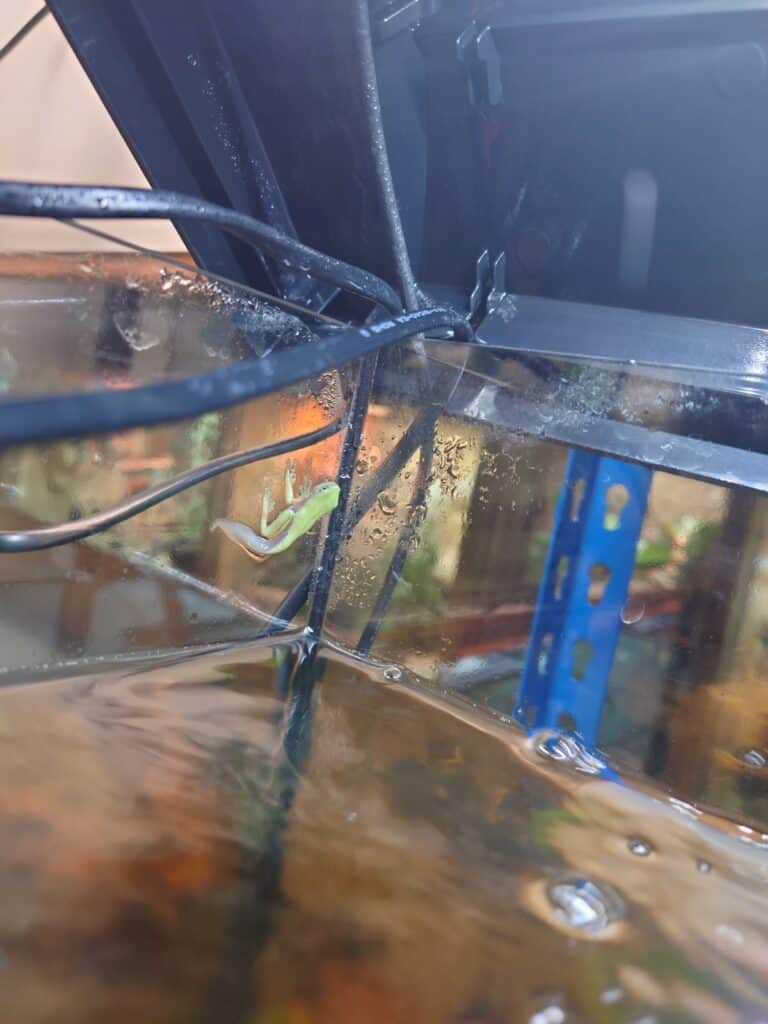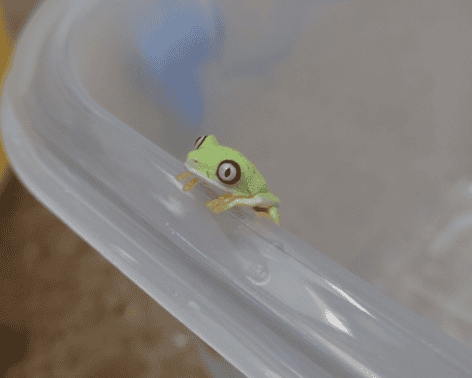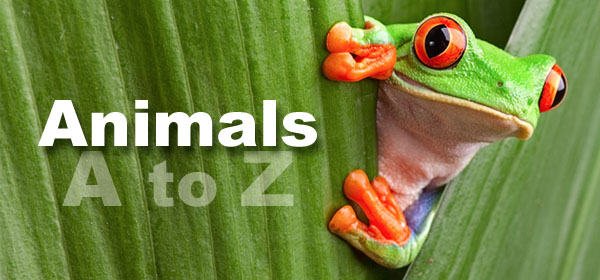May 16th is Endangered Species Day! A day all about bringing awareness to species that are struggling in the wild and to celebrate conservation efforts which aim to protect them.
This day was created by the Endangered Species Coalition in 2006 to help with their mission to stop human-caused extinction to species and to help protect and restore natural habitats.
To celebrate the day, it makes sense to dedicate this blog to one of our Critically Endangered species that lives in the reptile house: the lemur leaf frogs.
Although our lemur leaf frogs have made a brief appearance in a previous blog, we have recently welcomed some of the cutest bright green froglets into the world that you all deserve to see.
First though, lets talk about the lemur leaf frogs as a species.

Lemur leaf frogs are a small tree frog species that can be found in Costa Rica, Panama and Colombia. They live in forests close to rivers and have been losing their habitat to the development of urban areas, wood harvesting and livestock farming. The species is also threatened by chytridiomycosis (an infectious, fatal amphibian disease) but lemur leaf frogs have shown some resistance to this disease. Because of these threats, not only are they already Critically Endangered, but their numbers continue to decline.
Here at Wingham Wildlife Park, we have a group of lemur leaf frogs which are part of an ex-situ conservation project working with other EAZA collections to maintain the frogs’ population within captivity.

This year, we have been lucky enough to welcome a bunch of new lemur leaf frogs to the world and have been able to watch them transform from tiny eggs into bright green frogs.

A cluster of lemur leaf frog eggs on the underside of a leaf
Adult female lemur leaf frogs will lay their eggs in clusters onto leaves which overhang into water. They can lay up to 15-20 eggs in a clutch and can lay up to 3 clutches per night. These eggs are laid in a jelly like substance which helps the eggs stay safe, hydrated and insulated.
As these got bigger you could see the tadpoles wiggle away inside the eggs.

After 7-14 days, the eggs will hatch and fall into the water below, starting their journey as a tadpole.
They were all zoomy and had a good appetite (which meant lots of poop). They stayed in their parents’ tank for a short while then were moved into their very own tadpole tanks.

Slowly but surely, the tadpoles started to grow and pop out legs, starting with their back ones then moving to their front ones. Some even spent a few days missing a leg where one leg had popped out first while the other wasn’t quite ready yet.

The more they ate, the bigger they got. Eventually they were using their legs to swim and move about more than their tails and they began to change colour ever so slightly.


Froglets that recently emerged from the water still have tadpole tails.
When they were ready, they climbed out of the water and sat themselves on the glass. We then moved them into their new froglet tanks, leaving them to absorb the rest of their tails and start their froggy life.

A froglet in a temporary tub while their main tub was being cleaned.
Once the froglets have grown they will be sent to other collections, predetermined by the studbook keeper, to continue with the mission to maintain their numbers in captivity and ensure that they remain as healthy and diverse as possible.

A trio of lemur leaf frog froglets sleeping on leaves.
Our lemur leaf frogs are not the only species on the reptile and invertebrate section which are endangered. Here are some other endangered species that you can find in our collection:
- Savu Island Python (endangered)
- Gooty Ornamental Tarantula (critically endangered)
- Cuban Crocodile (critically endangered)
- Rhinoceros Iguana (endangered)
- Golden Gecko (endangered)
- Yellow-Margined Box Turtle (endangered)
- Alligator Snapping Turtle (endangered)
- Spiny Hill Turtle (endangered)
- White-Clawed Crayfish (endangered)
- Axolotl (critically endangered)



